 |
||
|
HOME
|
US Navy -
ships
|
US Navy - air
units
|
USMC - air
units
|
International
Navies
|
Weapon Systems
|
Special Reports |
||
|
Royal Navy - Guided Missile Frigate F 234 HMS Iron Duke |
||
|
||
| 12/22 | ||
|
Type,
class: Guided Missile Frigate; Type 23 / Duke class;
General Purpose (GP) variant Builder: GEC Marconi Marine (YSL), Scotstoun, Glasgow, Scotland, U.K. STATUS: Laid down: December 12, 1988 Launched: March 2, 1991 Commissioned: May 20, 1993 IN SERVICE Homeport: HMNB Portsmouth Namesake: Duke of Wellington (The Iron Duke) Ships Motto: VIRTUTIS FORTUNA COMES (fortune is the companion of valour) Technical Data: see INFO > Duke / Type 23 class Guided Missile Frigate |
||
| images | ||
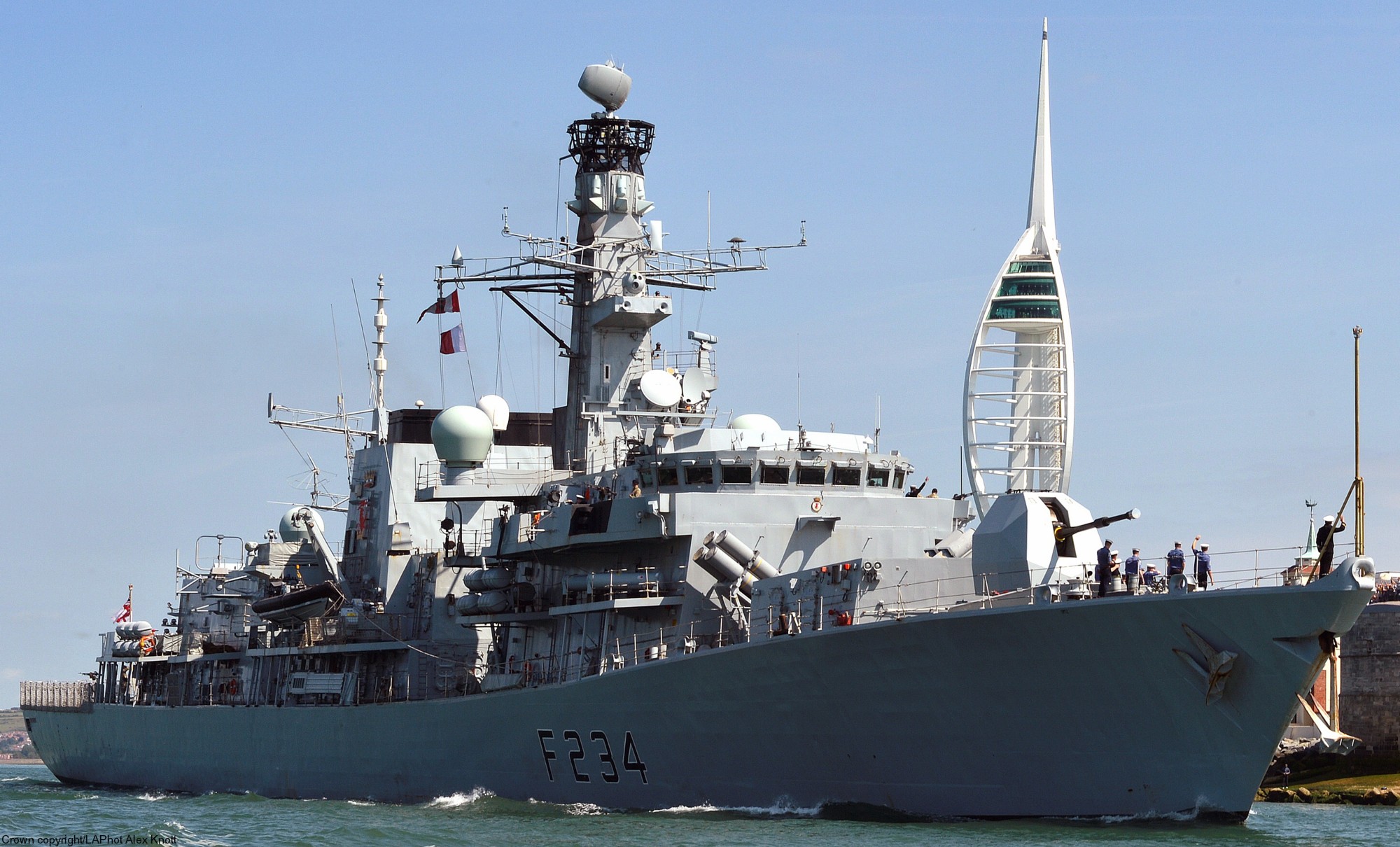 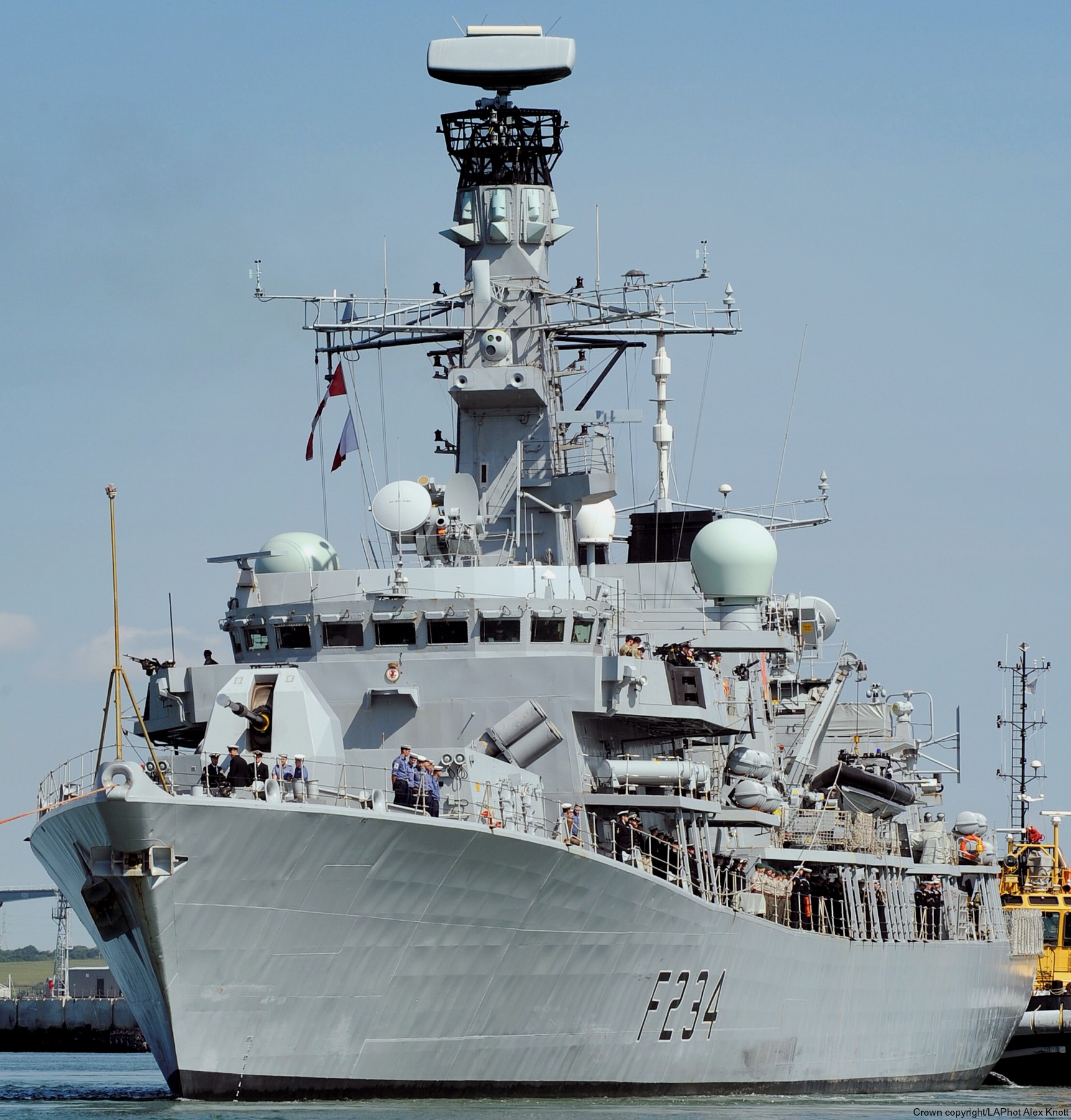 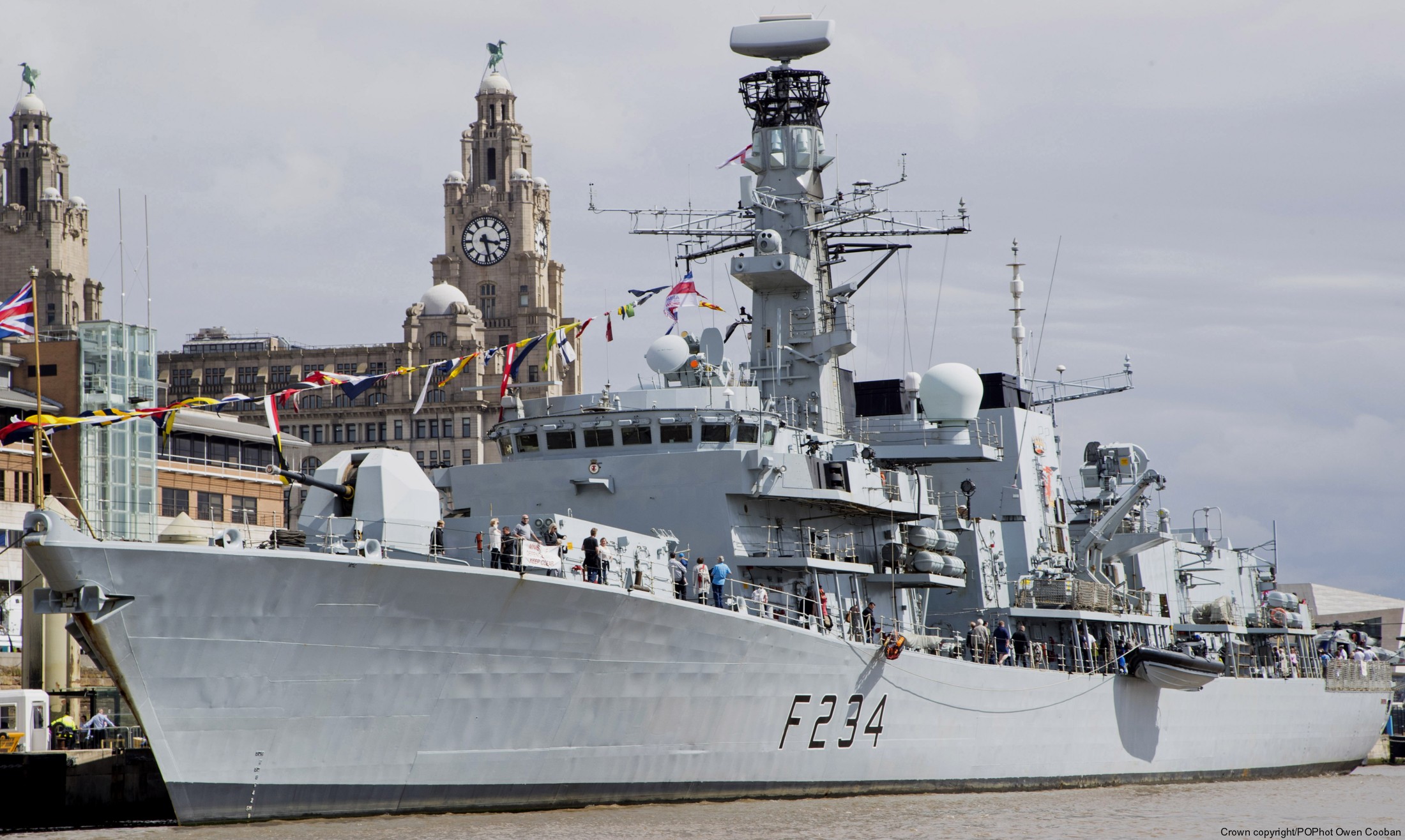 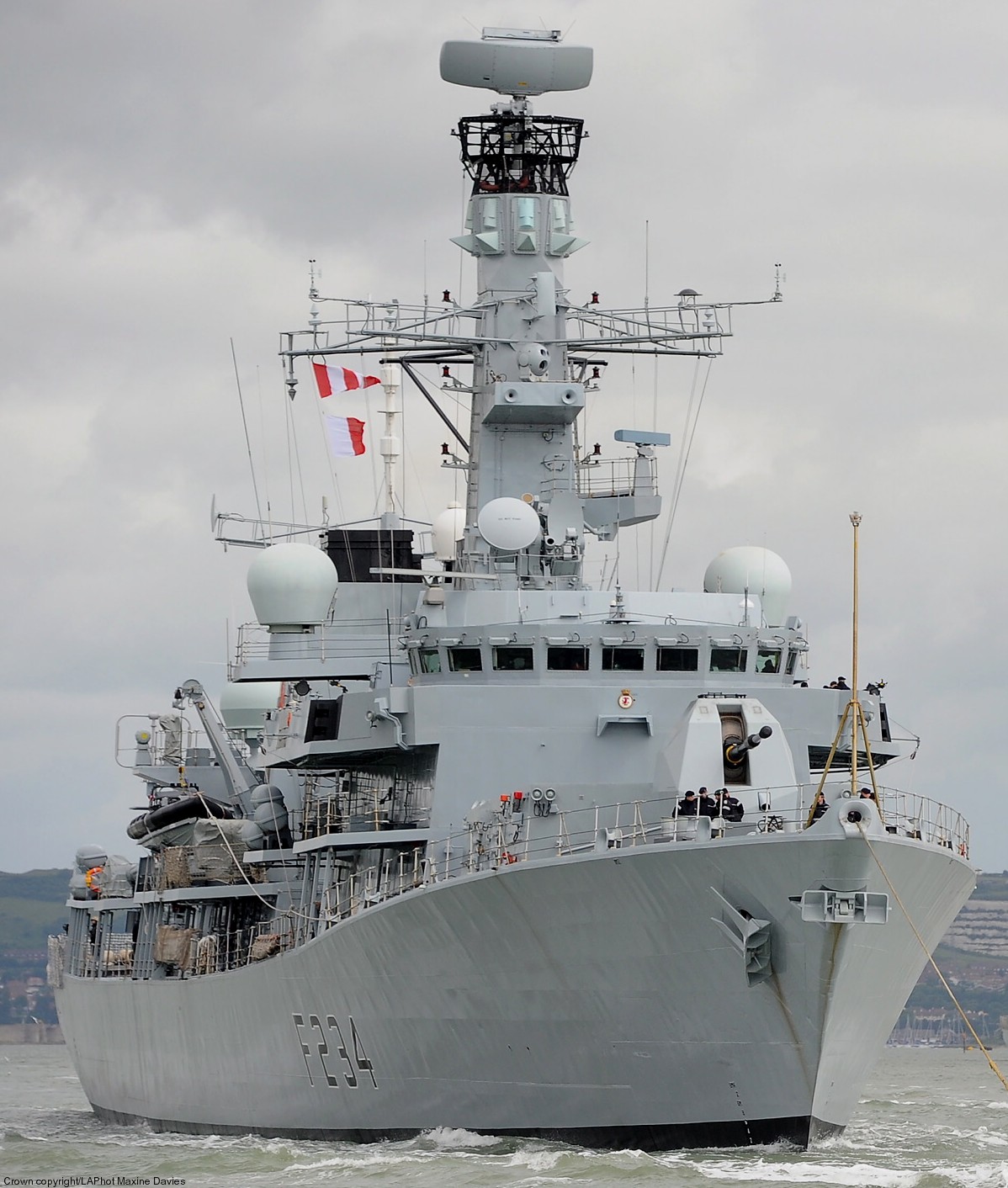 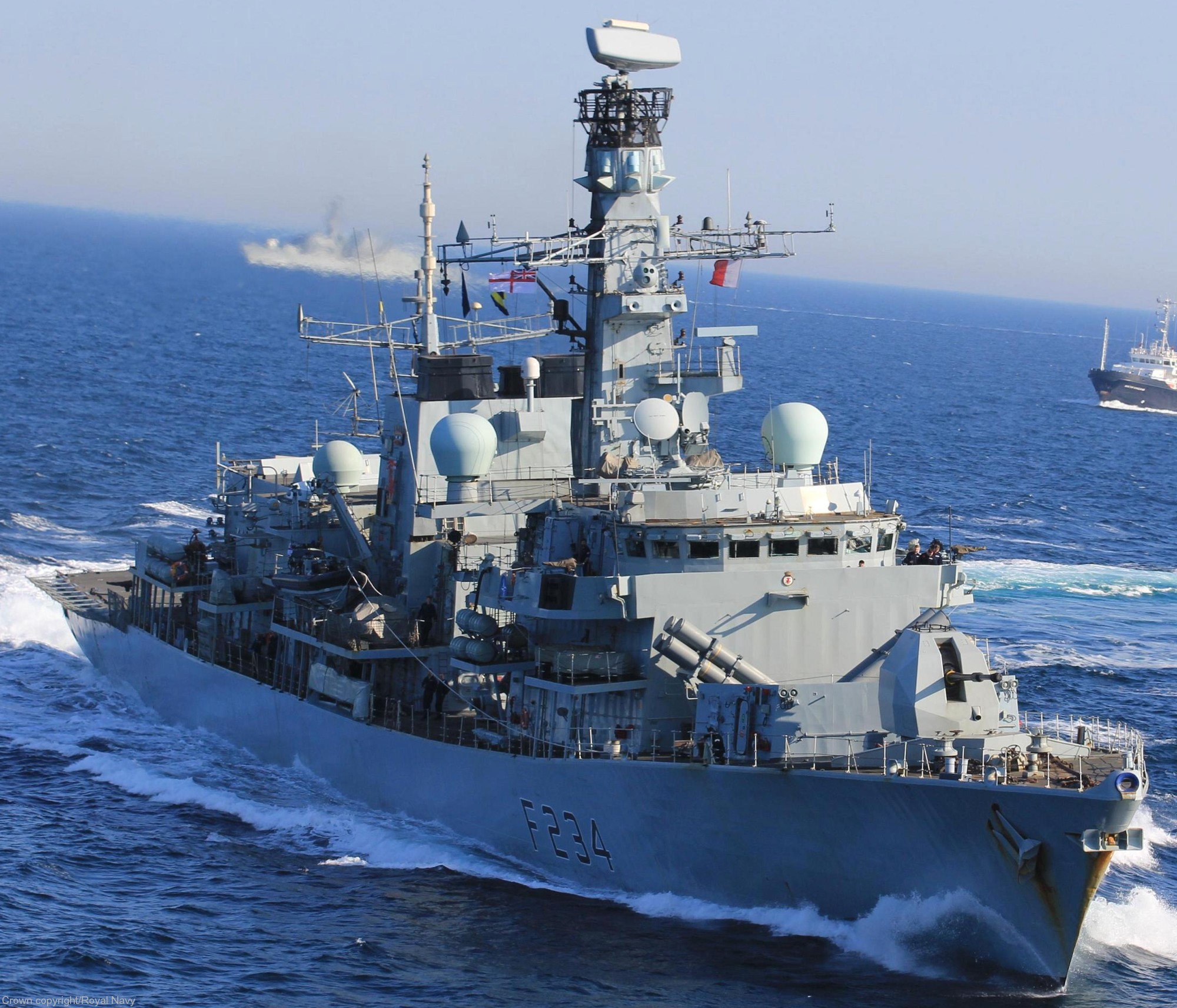 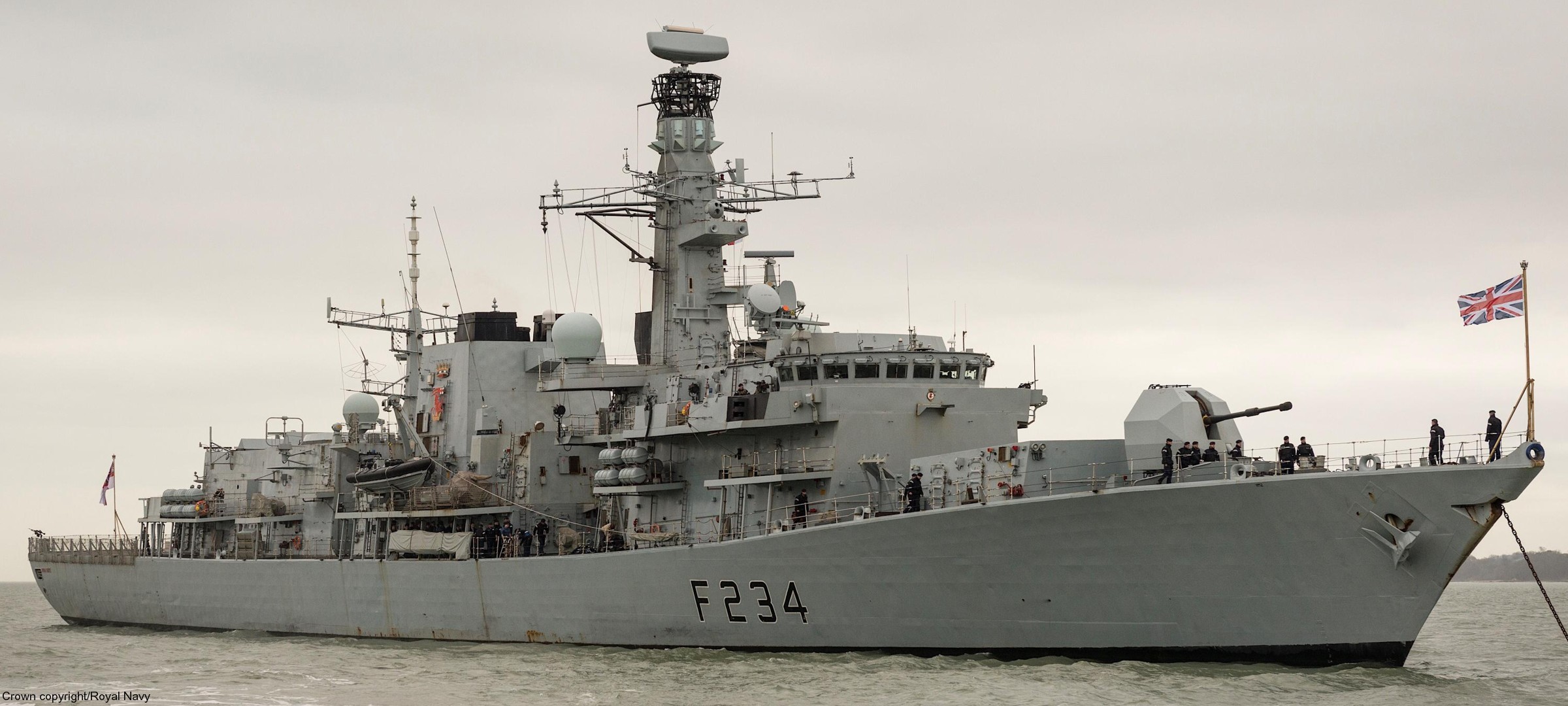 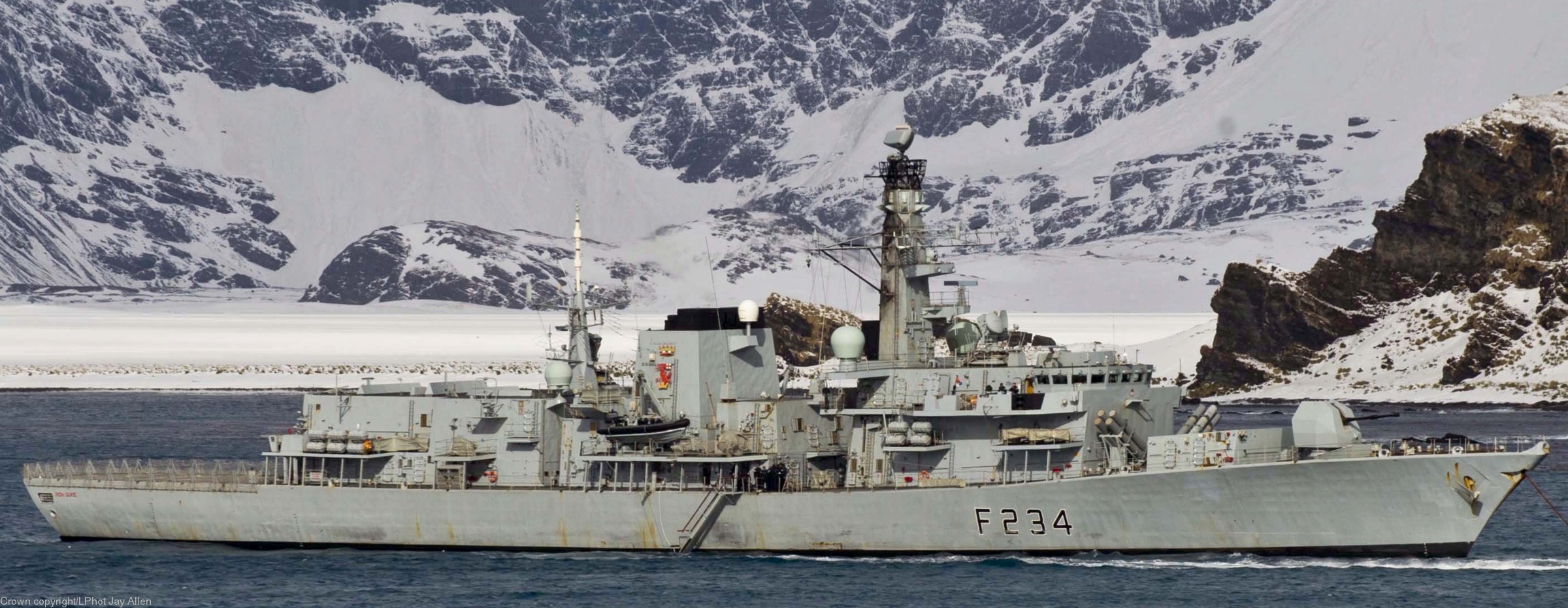 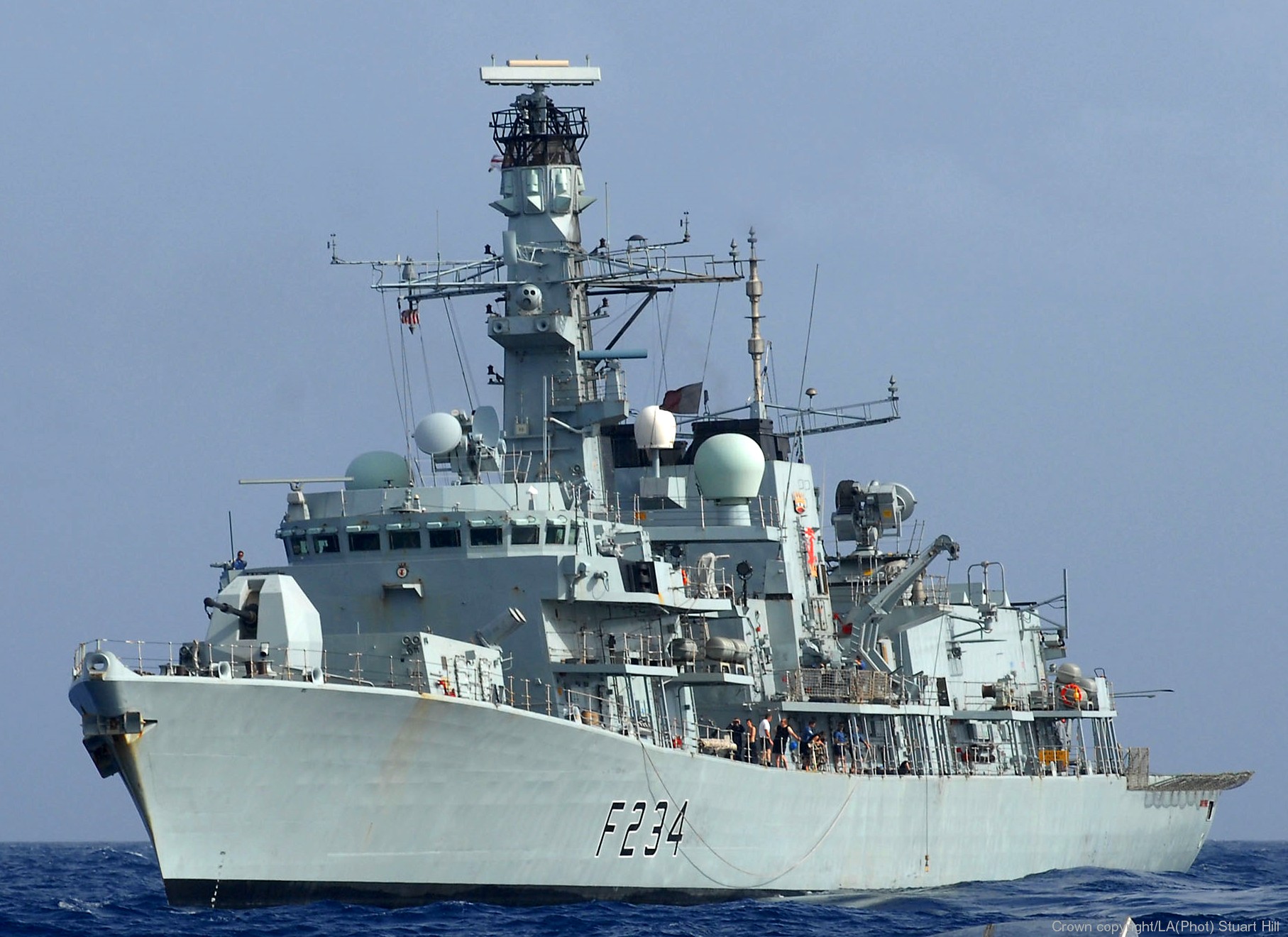 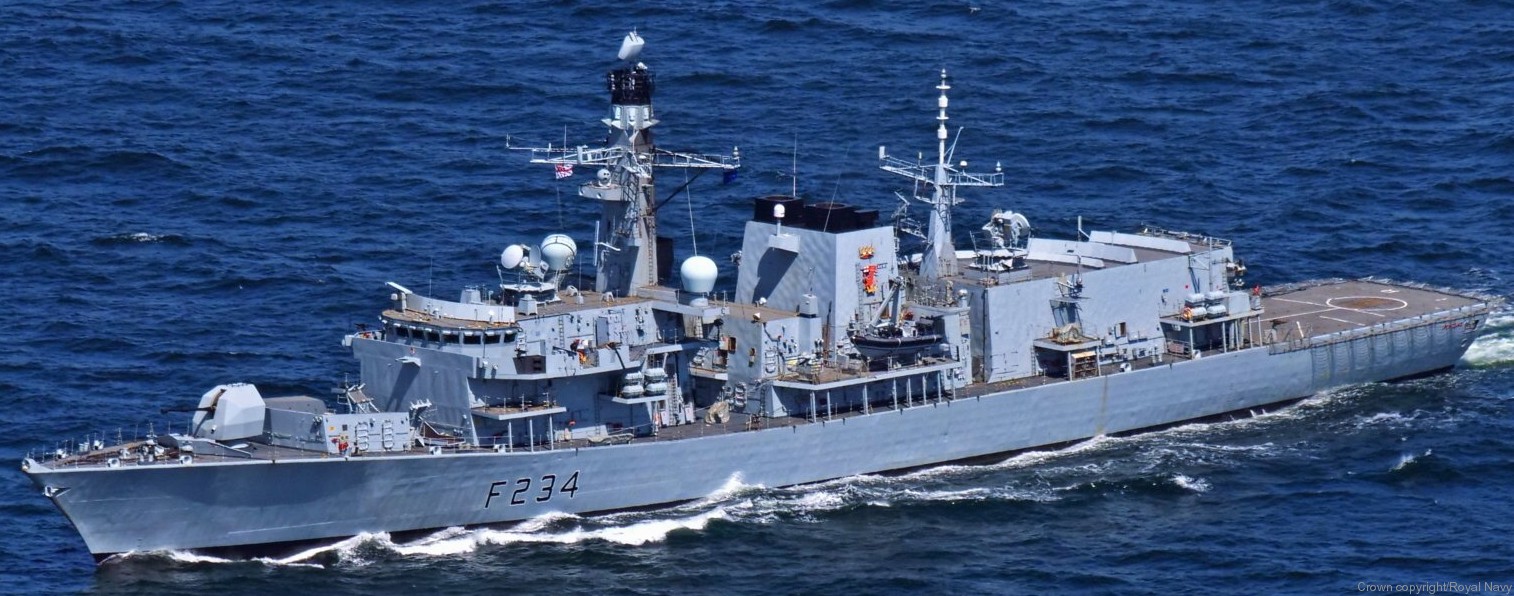 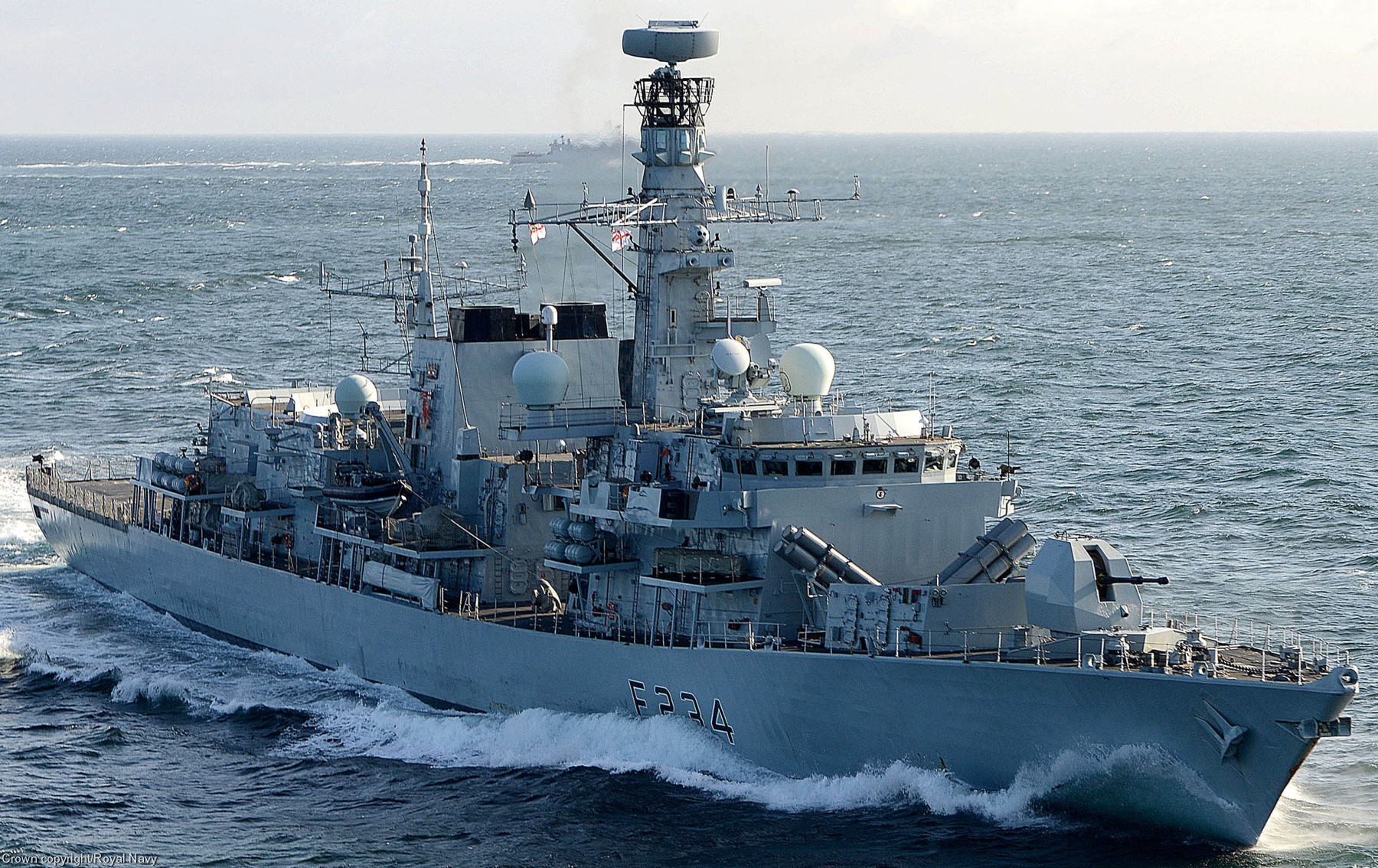 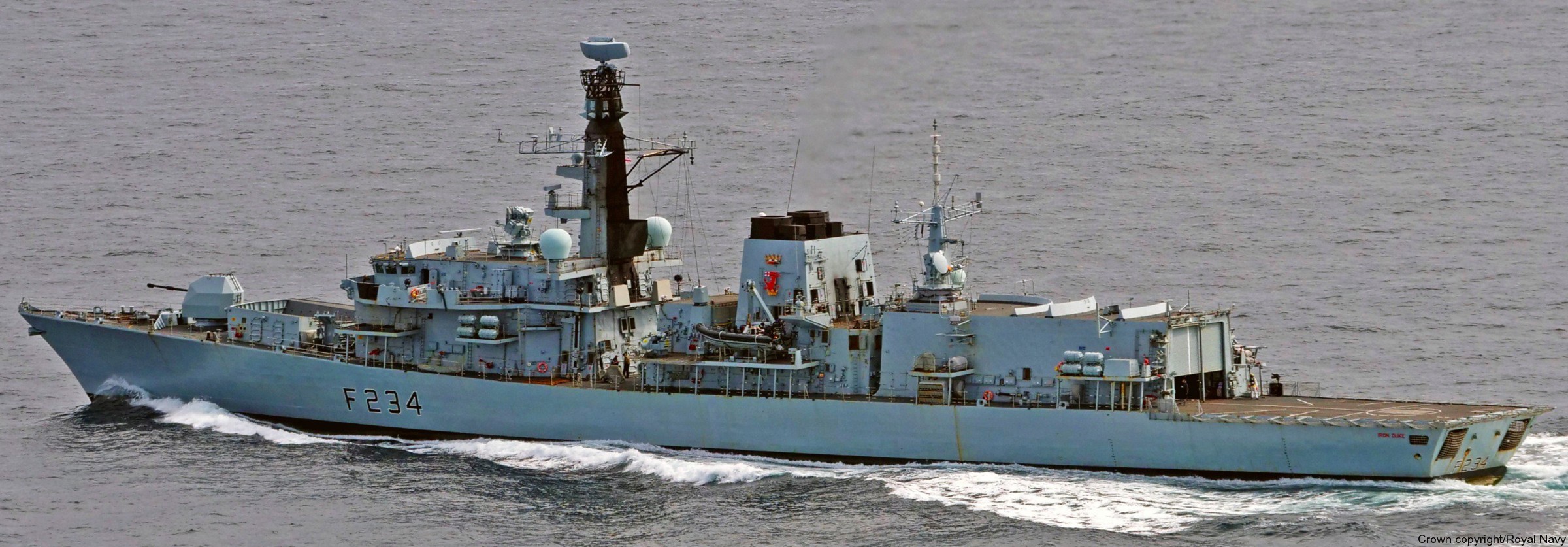 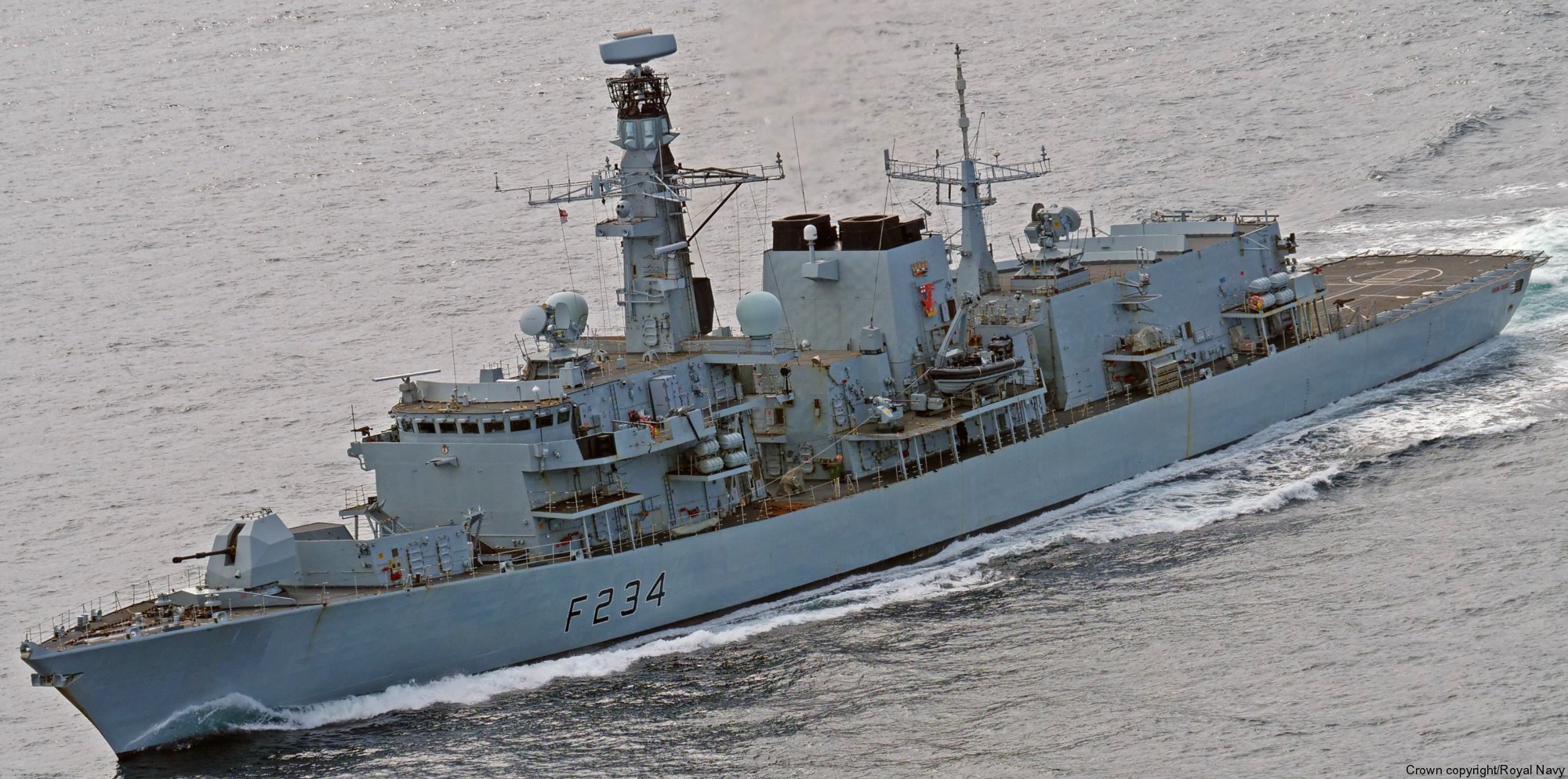  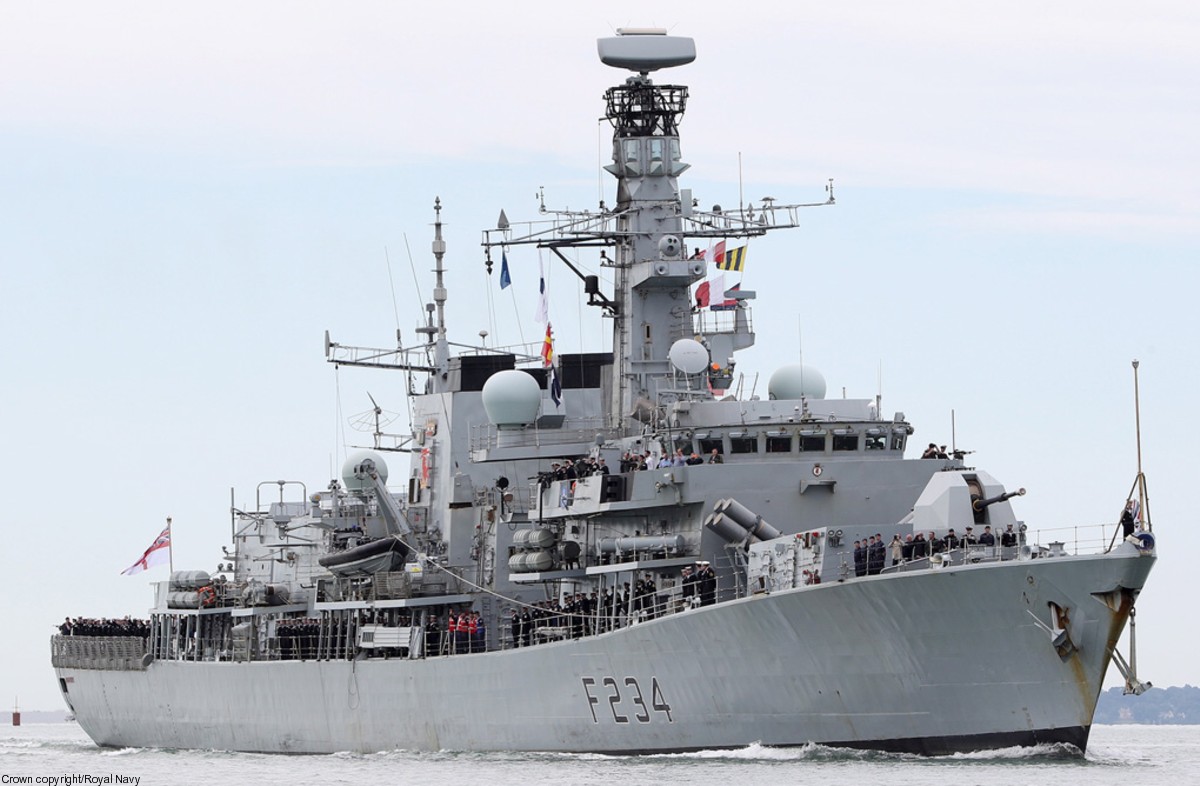 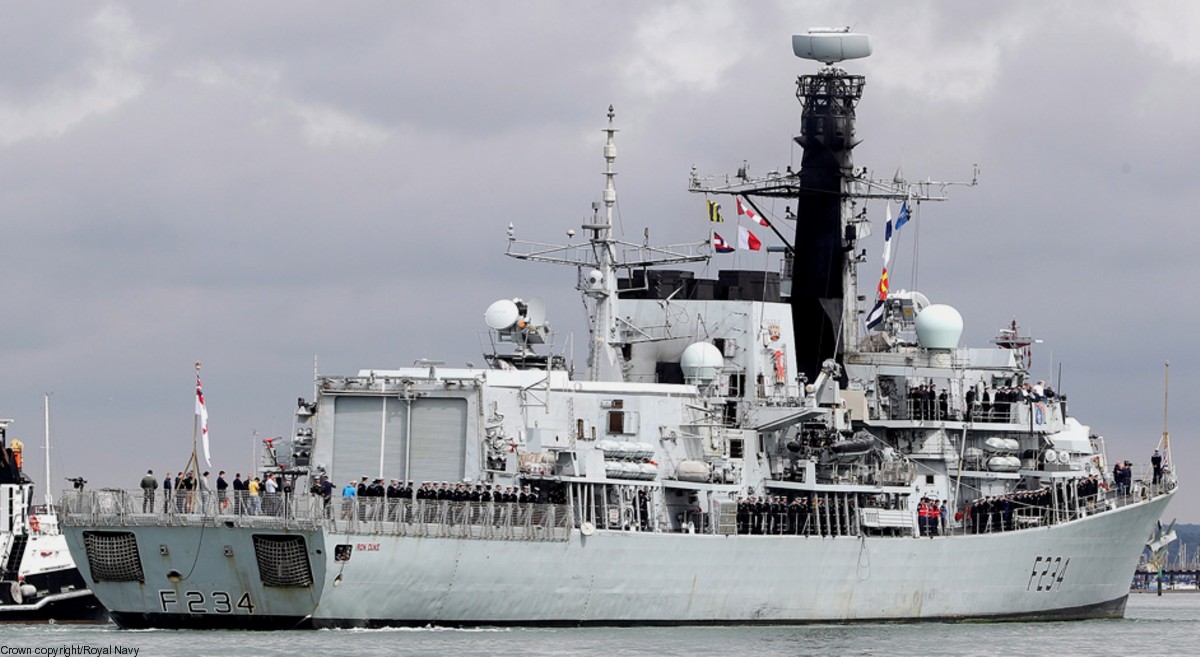 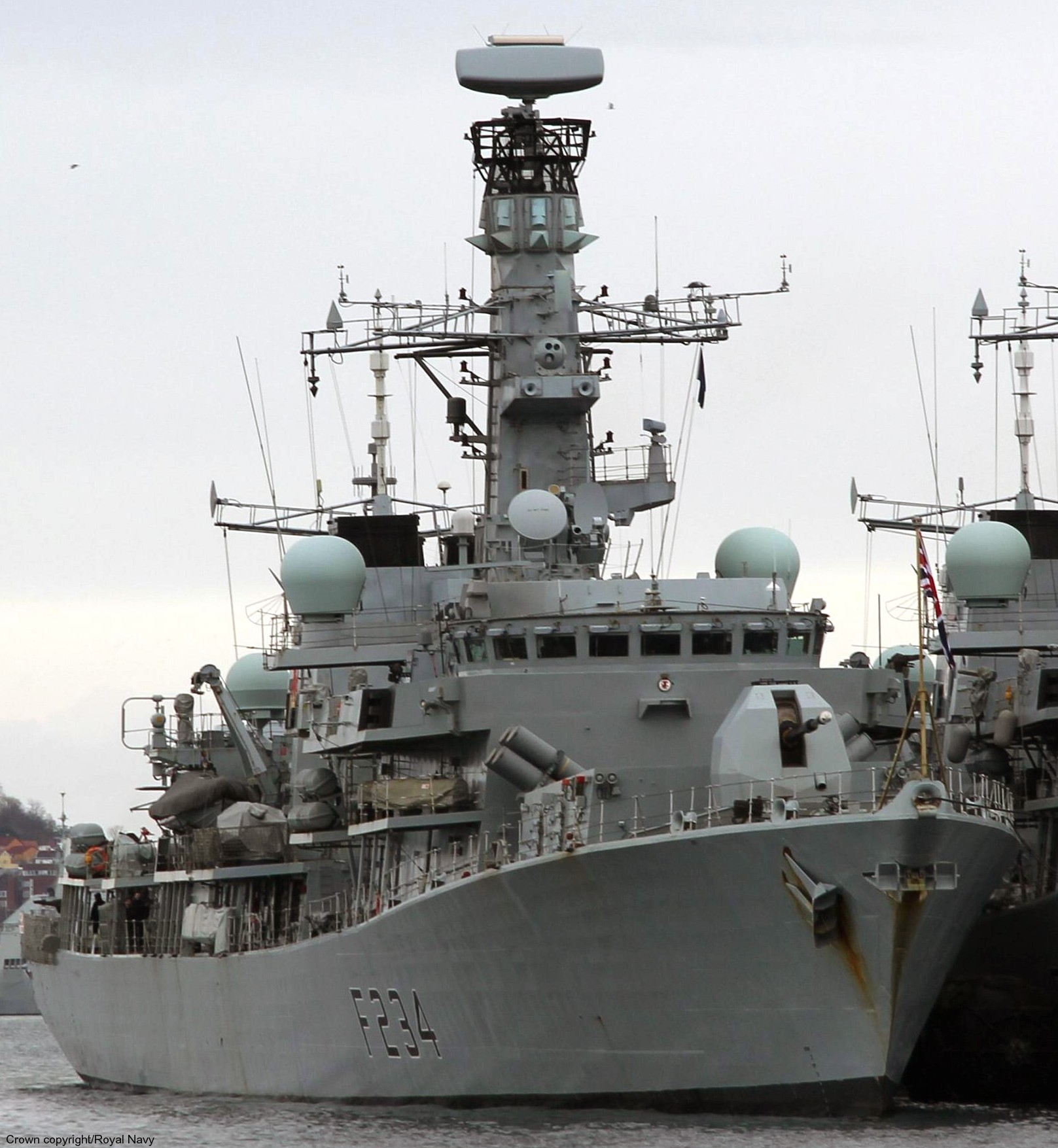 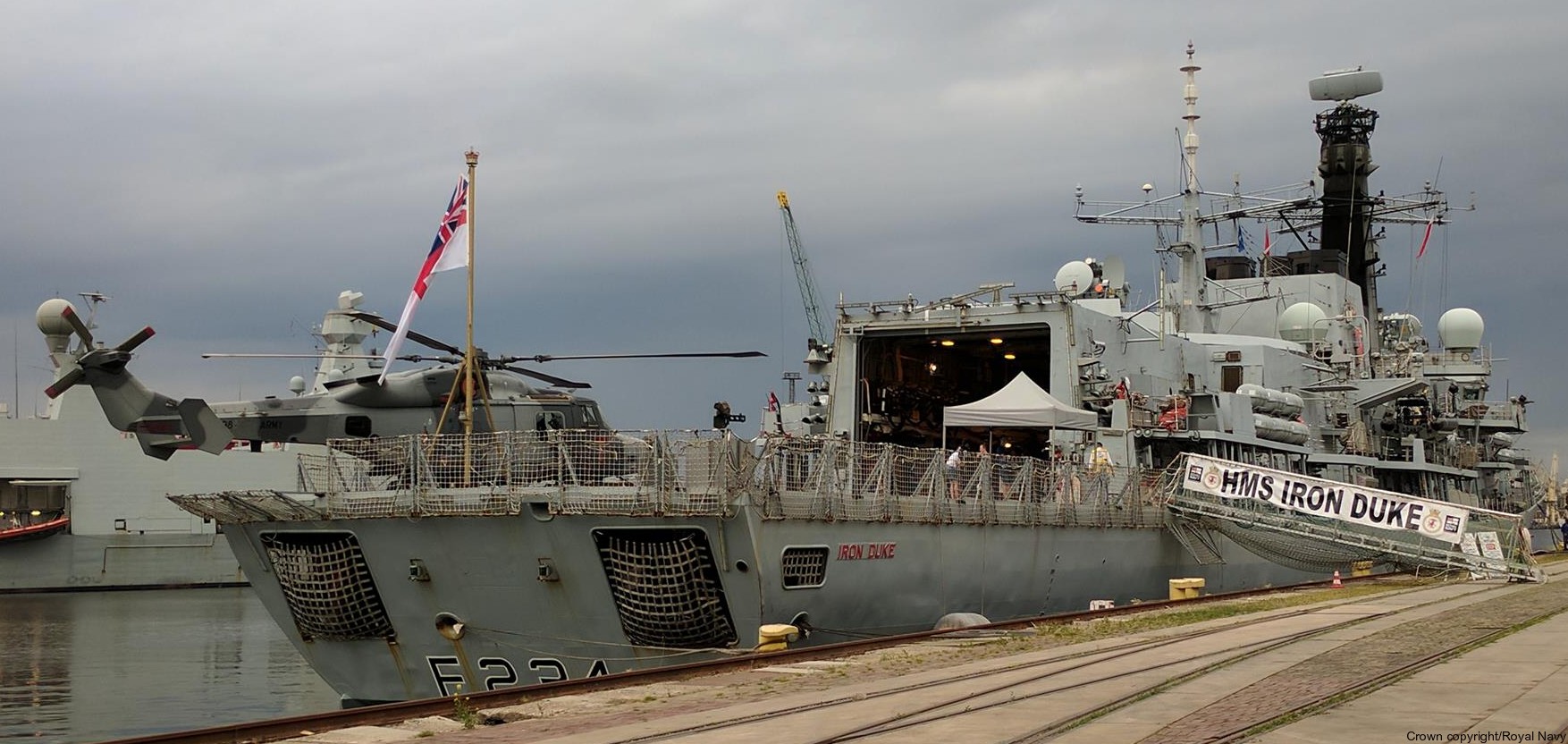 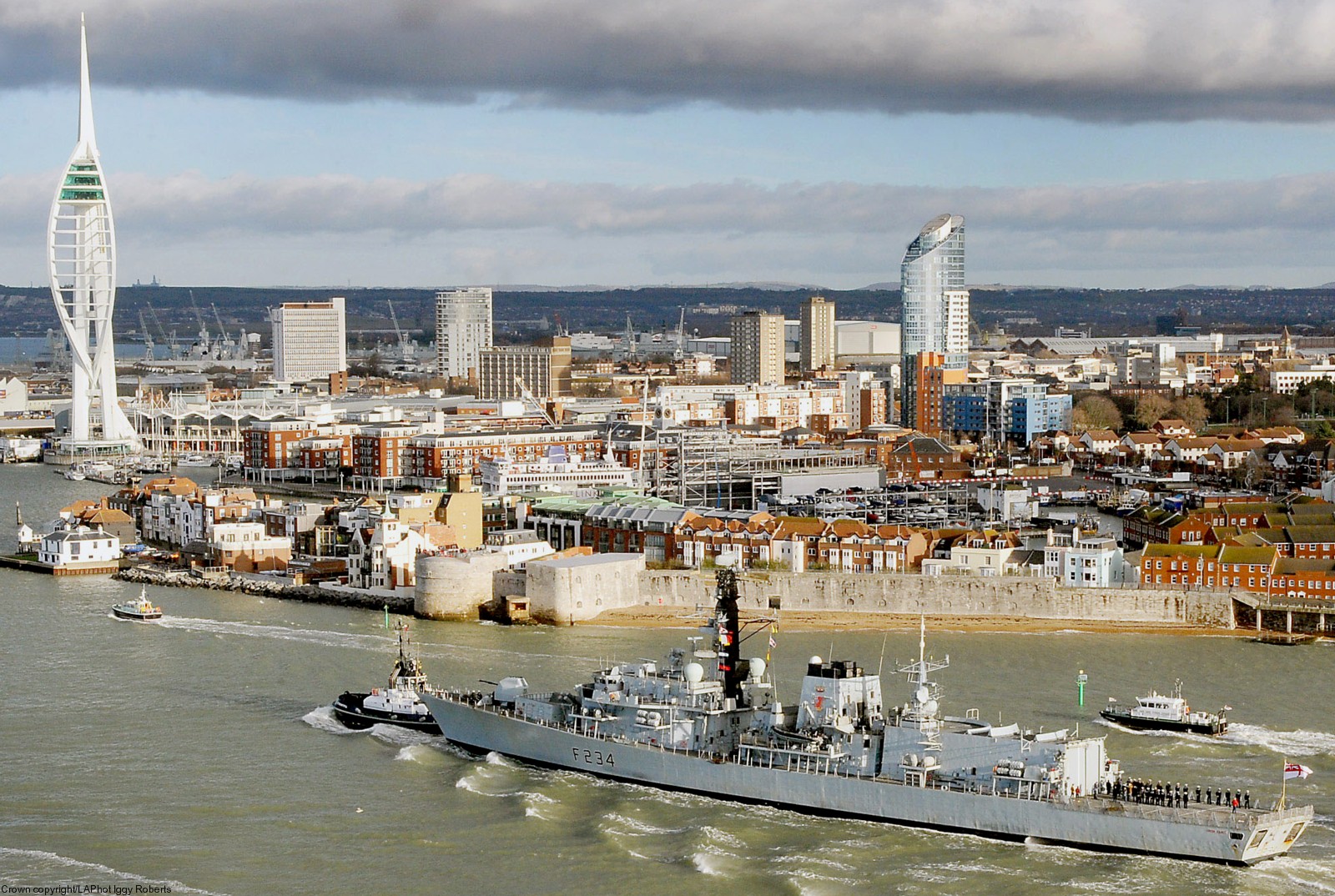 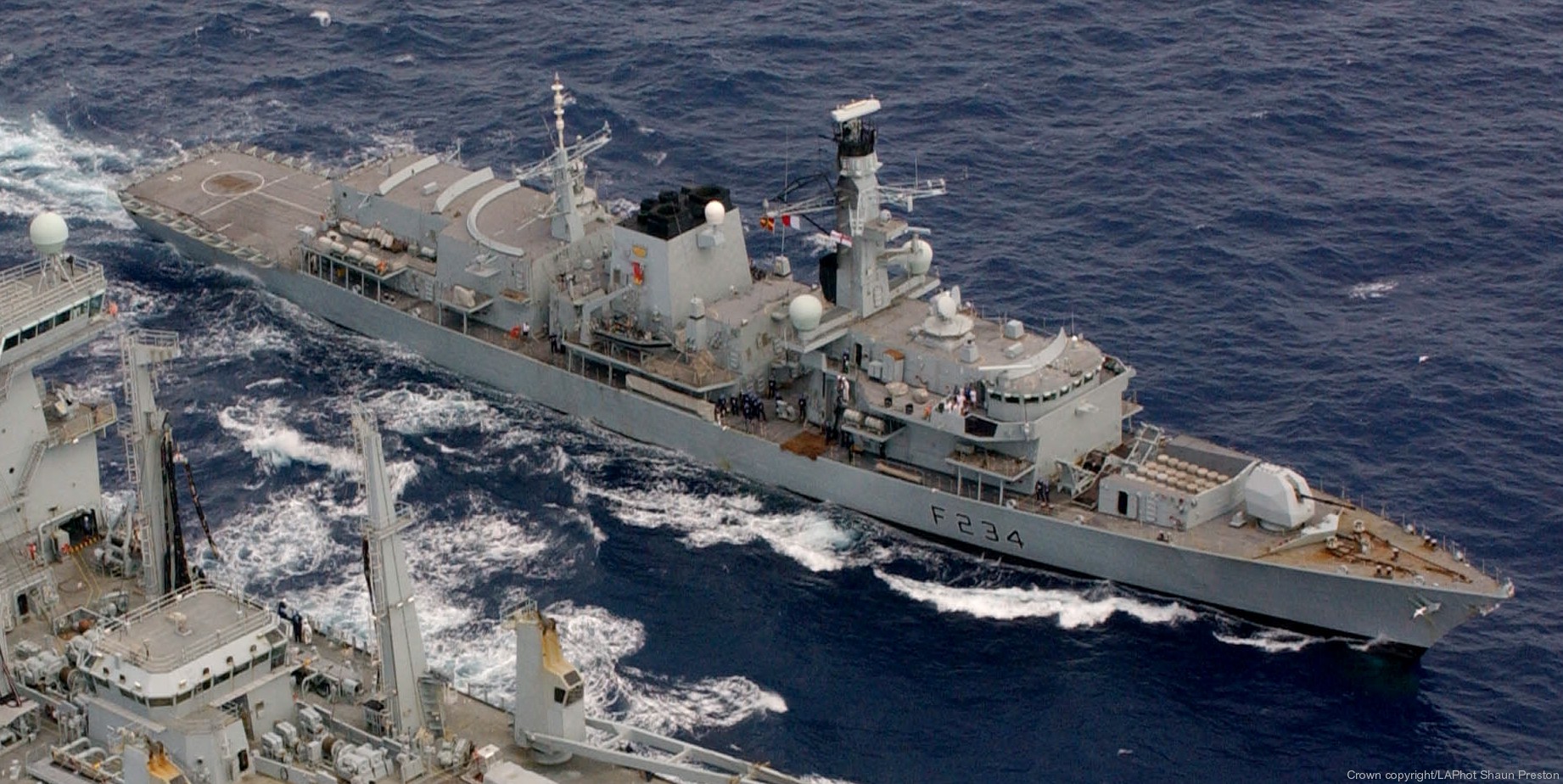 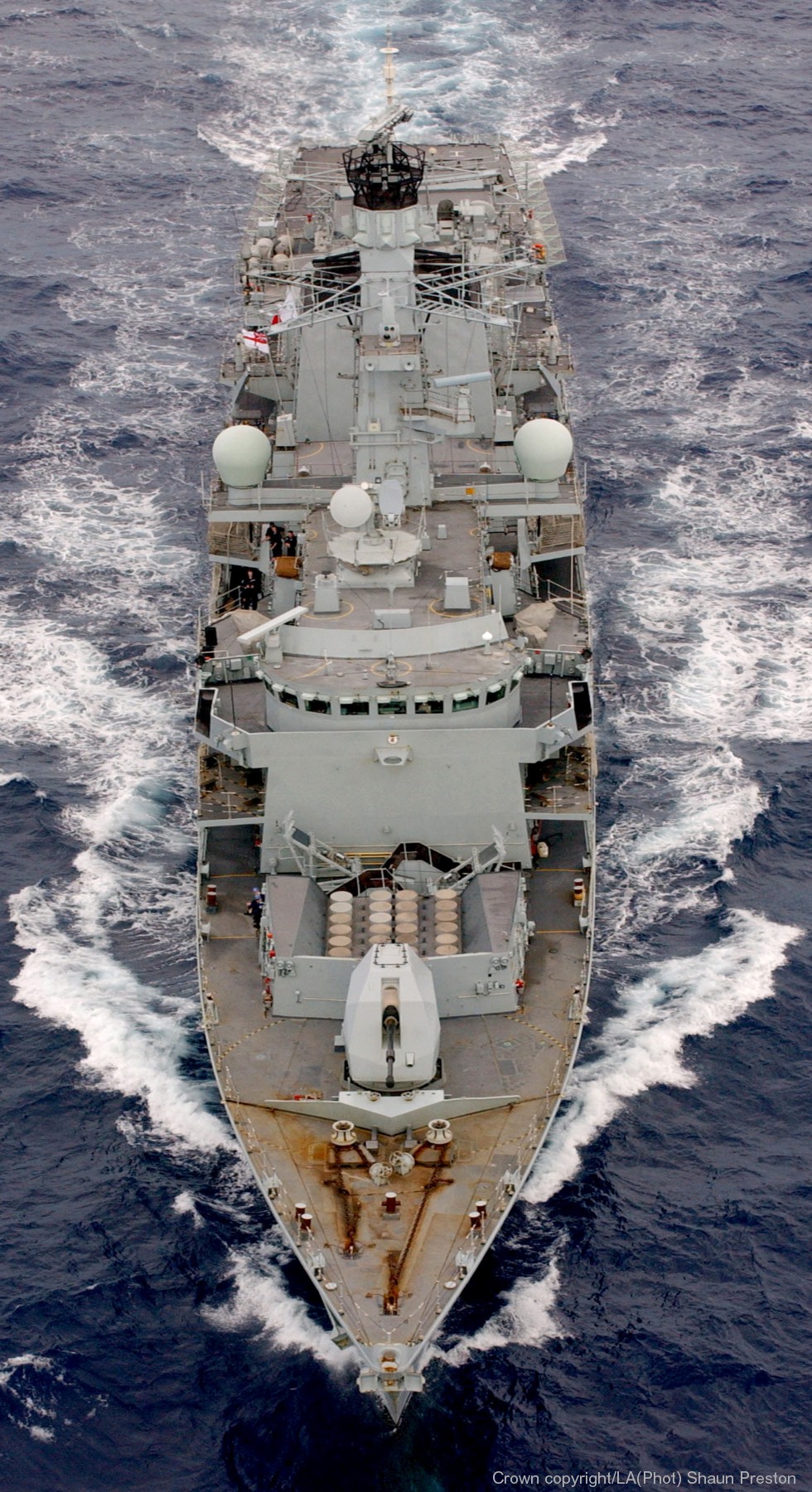 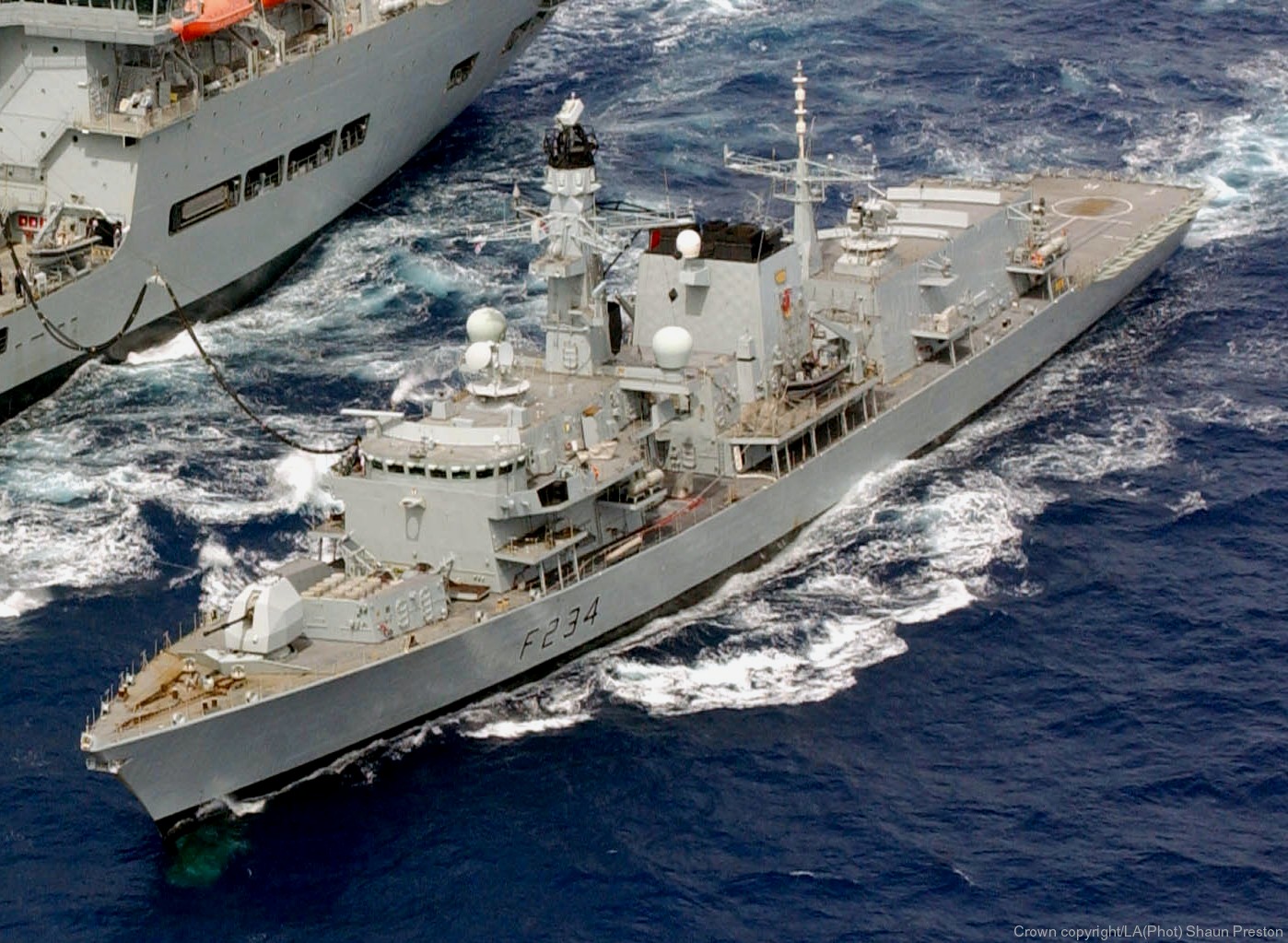 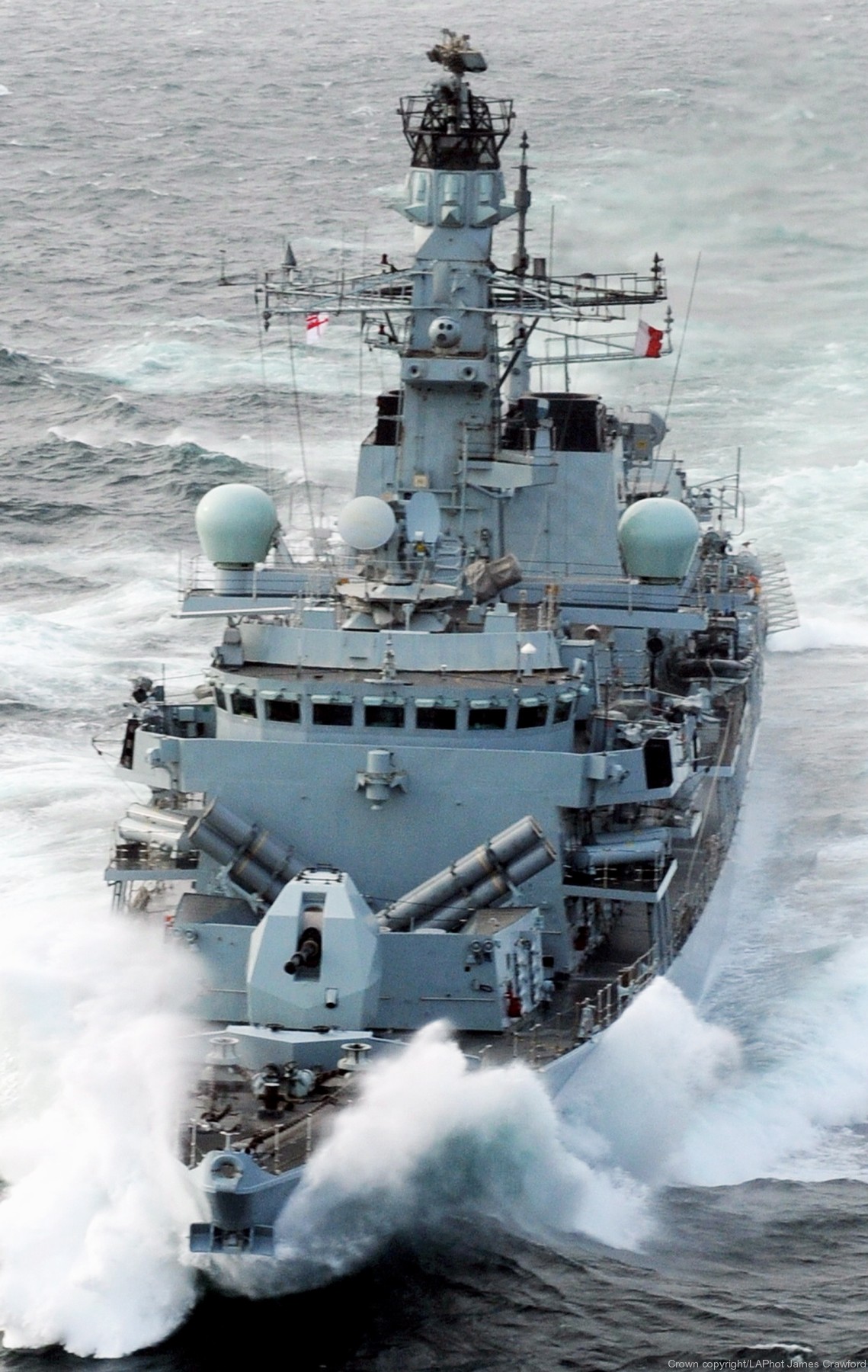 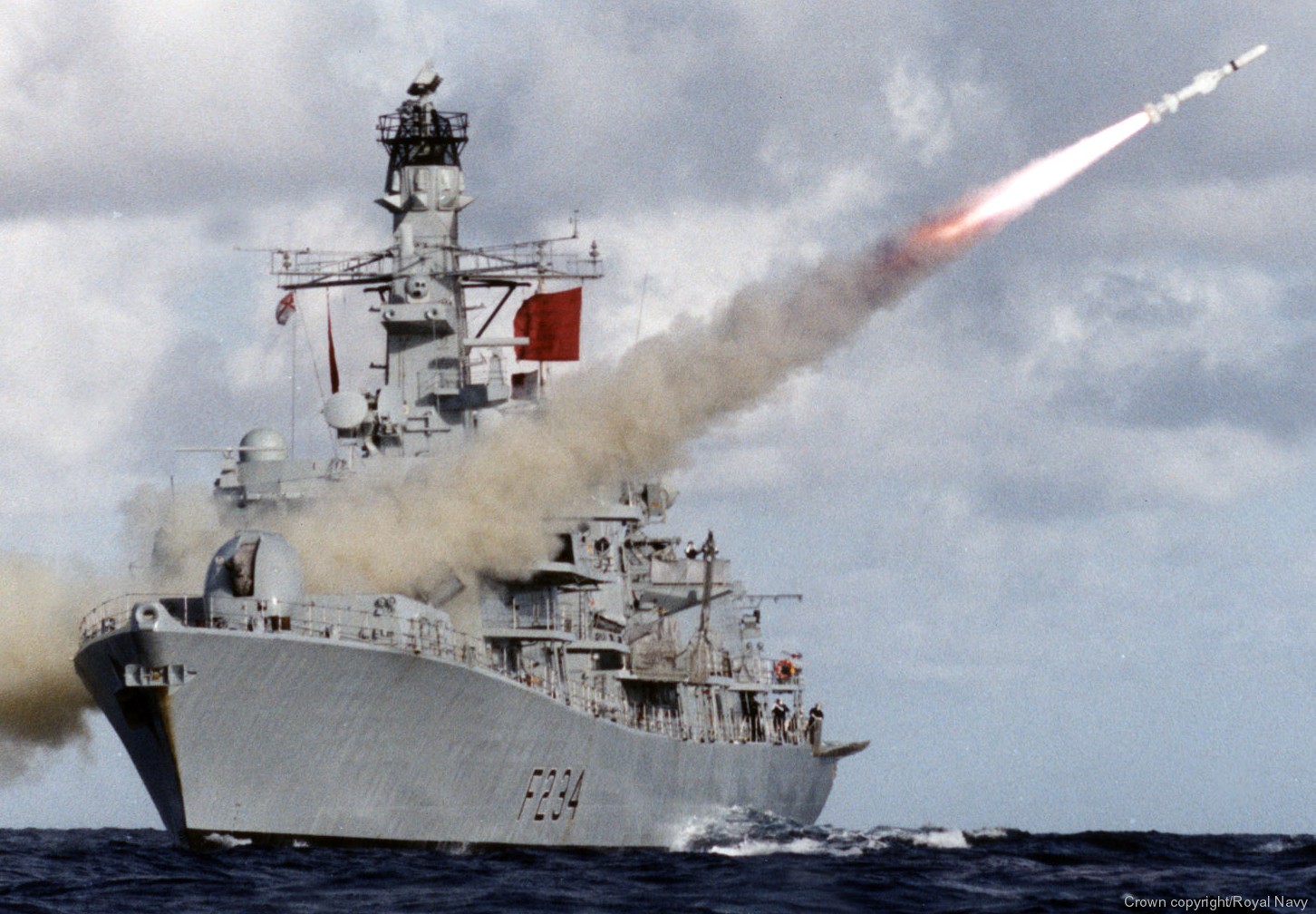 an RGM-84 Harpoon SSM was fired 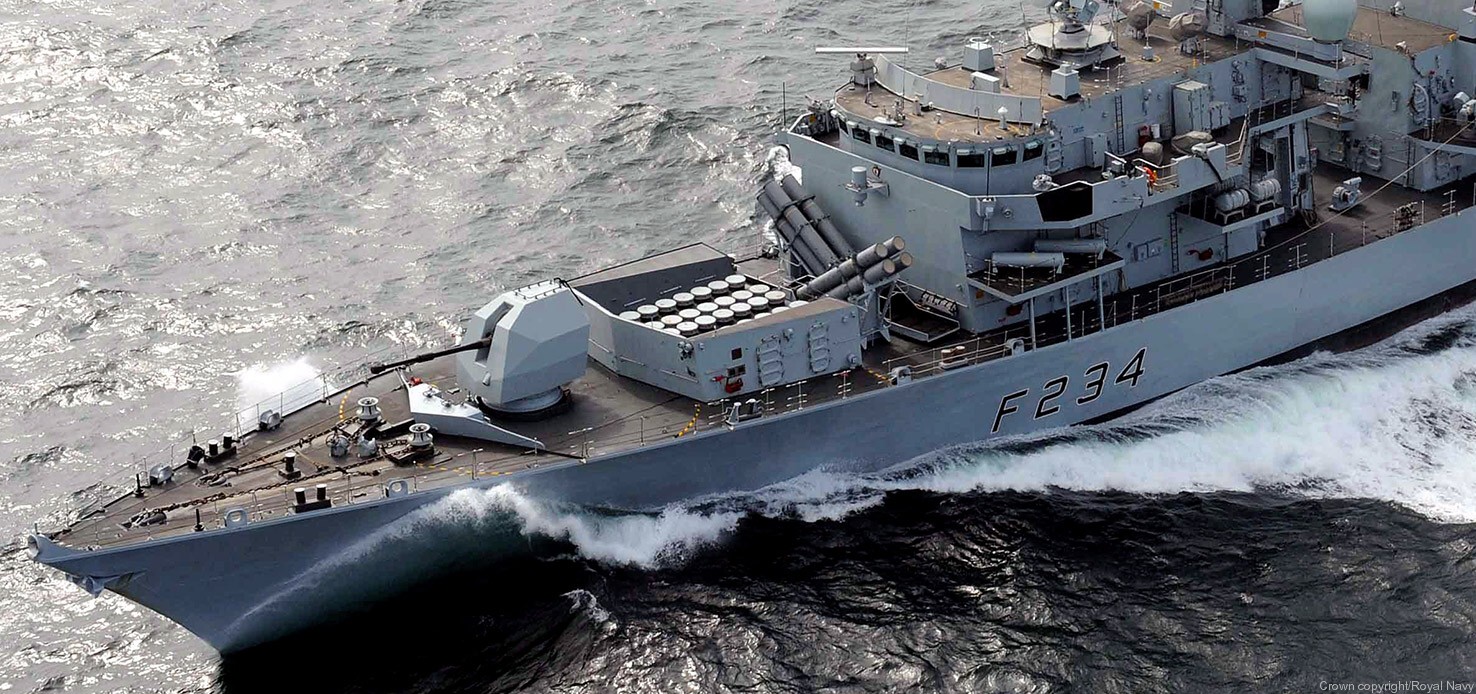 Mark 8 gun / 32-cell GWS-26 VLS / 8 x RGM-84 Harpoon SSM tube launcher 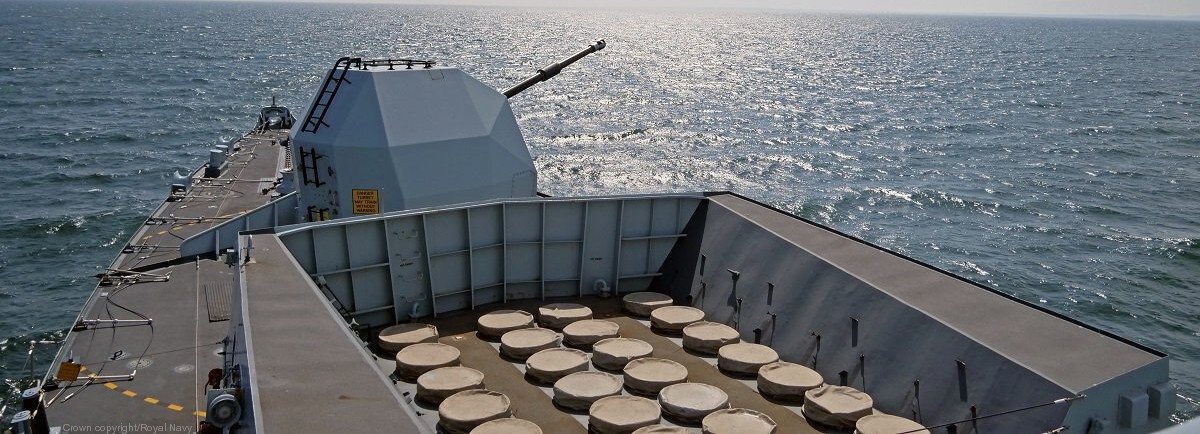 Mark 8 gun and GWS-26 vertical launching system (VLS) for 32 Sea Wolf SAM missiles 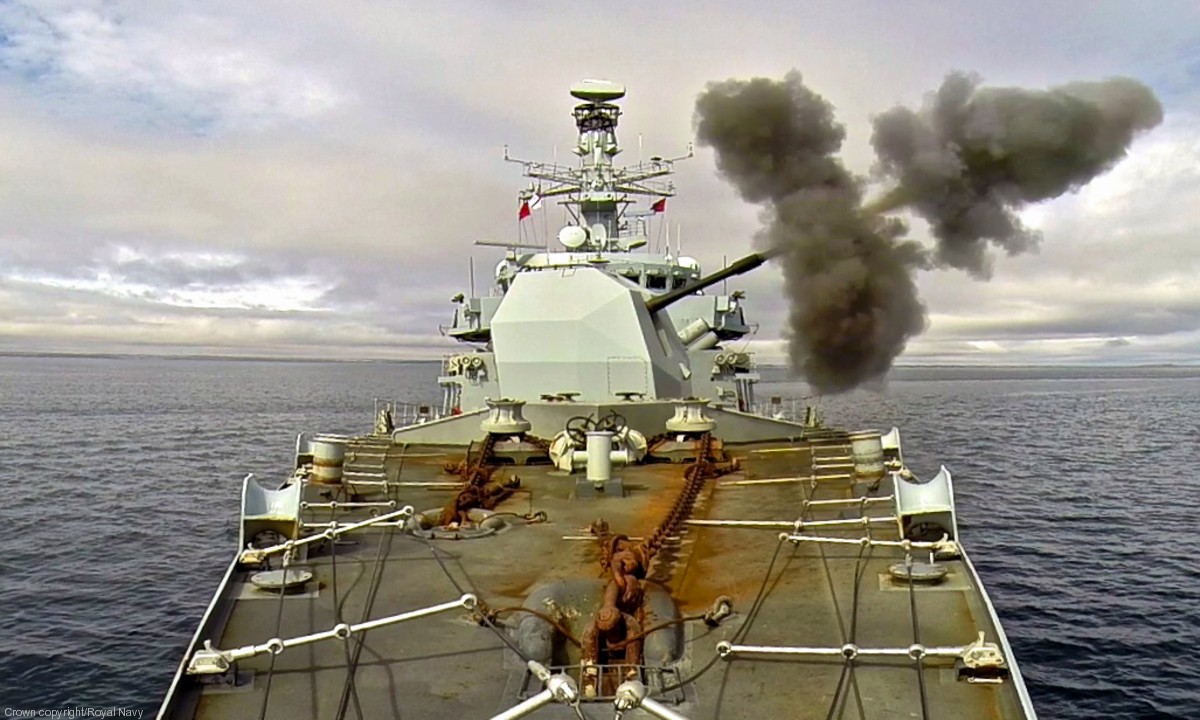 Mark 8 naval gun fire 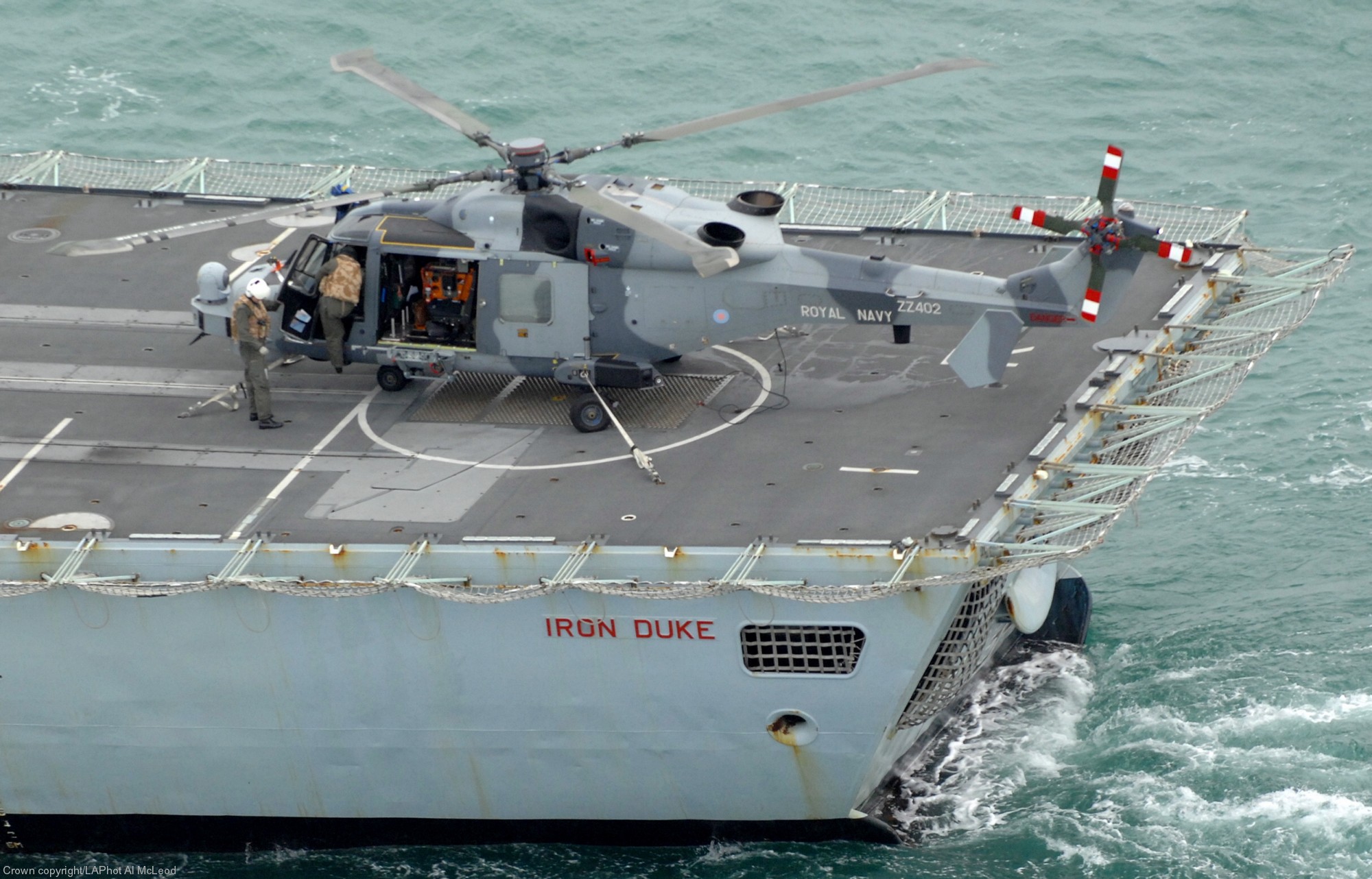 Wildcat HMA2 helicopter on the flight deck 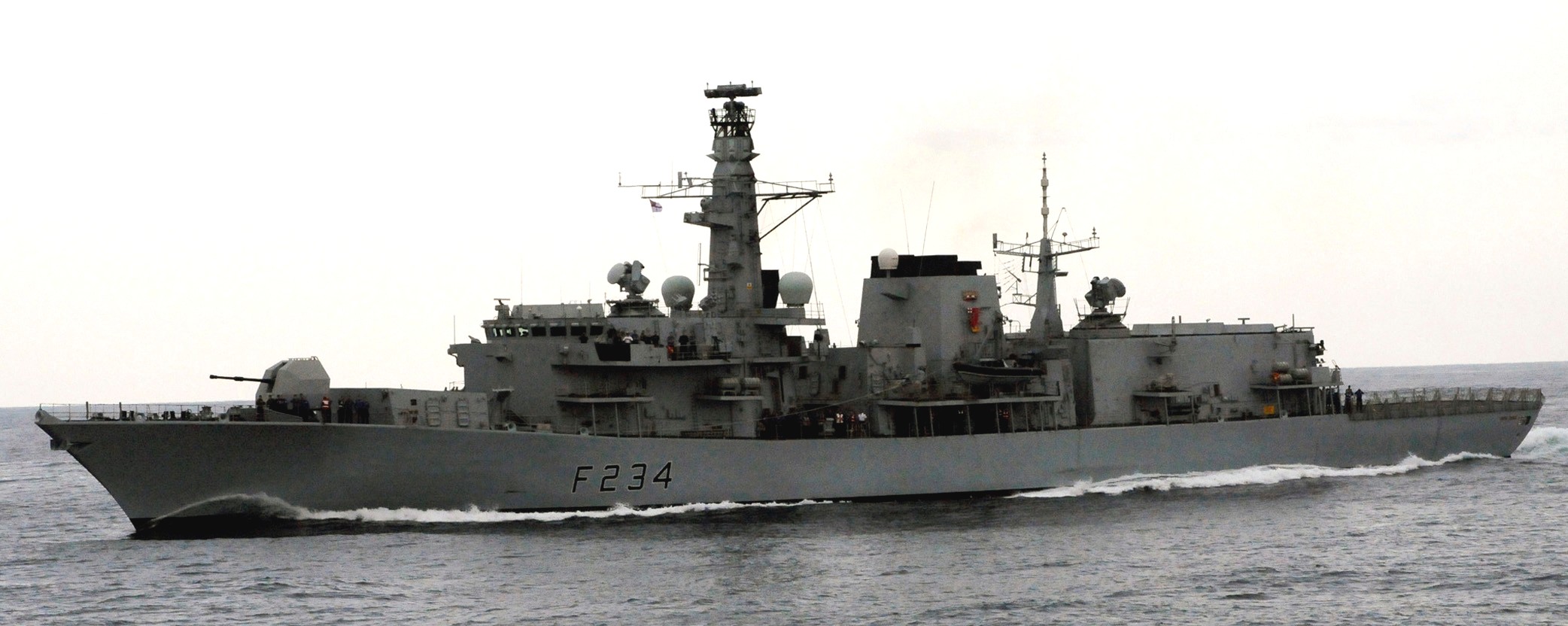 |
||
|
HMS Iron Duke (F 234): In 2000, under the command of Commander Ben Key for Atlantic Patrol Tasking (South), Iron Duke was part of the Royal Navy task force - comprising Illustrious, Ocean, Argyll, Chatham, and four RFA ships - that deployed to Sierra Leone during the civil war there. Iron Duke relieved Argyll of her duties in September. During this incident Argyll, assisted by Ocean, laid the foundation for the Iron Duke Community School;a school for orphans in Freetown. President Kabbah of Sierra Leone decreed the school be named after the Iron Duke in honour of their crew completing the construction of the six classrooms. During this deployment Iron Duke also visited the Falkland Islands, Brazil, Ghana, Senegal and attended Exponaval 2000 when she made a good will visit to Valparaiso, Chile, to help improve relations with the UK's traditional ally. This was the RN's first visit since the General Pinochet affair. In May 2002 Iron Duke re-entered service after a refit, armed with a new 4.5 inch Mod 1 gun. Under the command of Commander Phil Warwick, Iron Duke sailed into Portsmouth for her re-dedication. Amongst those in attendance were the present Duke of Wellington and Earl Jellicoe, both related to figures associated with the ship's name and career. The following January Iron Duke deployed to the Caribbean for counter-drugs operations, hurricane season disaster relief standby, and visiting UK Overseas Territories for diplomatic purposes. This was the frigate's first operation since completing her refit at the end of 2001 and comprehensive training including multi-national exercises off Scotland. In February 2006 Iron Duke conducted trials in Loch Goil and Loch Fyne. In September 2006 Iron Duke, under Commander Andy Jordan, was providing a presence for UK overseas territories in the Caribbean and providing the UK contribution to the war on drugs. She returned to the UK in December 2006. During her six-month deployment, Iron Duke steamed over 31,000 nautical miles (57,000 km), and made 22 port visits to 18 different locations. In 2007 Iron Duke, now under the command of Commander Andy Gurr, was dry-docked for ten months at HMNB Portsmouth. Various systems were upgraded including the anti-submarine warfare equipment, and the ability to operate the Merlin helicopter was added. The first installation of a NATO Radial Chemical, Biological, Radioactive, Nuclear filter system was made; this filter was undergoing trials prior to installation across the fleet, if successful. After 18 months of refit and upgrading, by March 2008 Iron Duke was halfway through her Operational Sea Training, in readiness for deployment to the North Atlantic at the end of May. All aspects of warfare were included in the training, including the infamous 'Thursday War' training exercise. On 18 April 2008 Iron Duke deployed to Avonmouth to train in sea and harbour safety. Avon and Somerset Police assisted in training in the co-operation between the Royal Navy and uniformed police in the event of harbour security being breached. Civic dignitaries also viewed the ship. Later in April the Iron Duke's Operational Sea Training increased in difficulty with a simulation of tension between Brownian and Ginger forces with negotiations in neutral Freeport (Devonport) and a high risk of terrorist attacks. This exercise tested the defensive capabilities of the ship and the flexibility of proportional response to threats. Later in the series of exercises a hurricane hit the simulated island of Bullpoint, allowing Iron Duke to test her disaster relief capabilities including first aid, providing food and shelter to the survivors and helping to rebuild basic amenities. Iron Duke visited her home town, Kingston upon Hull, over the weekend of 26 to 29 April 2008 and was open to the public for six hours. By Friday 13 June Iron Duke arrived in Lisbon, Portugal after two operational stand-offs to determine that she was ready to deploy operationally. Iron Duke was briefed by the Maritime Analysis and Operations Centre-Narcotics, a pan-European counter-narcotics agency, about intelligence on criminal matters such as cannabis and cocaine smuggling on the high seas. She then moved to Gibraltar for re-supply and the infamous Rock Run. Iron Duke was now on Maritime Security Patrol in the North Atlantic. As of 31 August 2008 Iron Duke was dispatched to assist relief efforts for the Atlantic Hurricane Gustav. Iron Duke has intercepted illegal drugs being shipped from the Caribbean to Europe on several occasions, sometimes aided by embarked United States Coast Guard personnel. Large shipments were intercepted on 25 June 2003 (3.7 tonnes of cocaine on MV Yalta), 2 June 2008 (900 kilograms of cocaine in a speedboat which later sank), late July 2009 (drugs with a street value of £33 million on a speedboat later sunk by gunfire). and September 2009 (5.5 tonnes of cocaine). Iron Duke spent the first half of 2011 in the Persian Gulf before relieving HMS Liverpool off the coast Libya where she took part in combat operations for the first time in her 20-year history. She entered the Joint Operating Area on 16 July 2011 and over the course of the next five days, she went to Action Stations several times to support operations ashore. She was responsible for the destruction of a gun battery outside the besieged town of Misrata, while the frigate’s 4.5-inch gun fired many illuminating starshells to light up targets for NATO planes. She returned to Portsmouth in late July, in a joint homecoming with her sister ship Richmond. The Royal Navy's next generation helicopter, Wildcat, completed 20 days of demanding trials aboard Iron Duke, her first frigate, in January 2012. In March 2012 Iron Duke began a major refit in HM Naval Base, Portsmouth. Some major parts of the work package took place for the first time on a Type 23 class of ship, as the MOD looks to extend the life of the Type 23 frigates beyond the original time frame to coincide with the introduction of the Type 26 class of ships, the first which is currently expected to enter service as soon as possible after 2020. Also included in the refit was the installation of BAE Systems Artisan medium-range 3D surveillance radar and in June 2013 she was put back at sea. She test fired 7.62mm rounds from her General Purpose Machine Guns and Mini-Guns, 3lb ceremonial guns and the torpedo system. In early 2014, she successfully fired her new 'SWMLU' Seawolf missile system against towed targets, destroying two simulated hostile aircraft skimming the surface of the sea, targeting from the brand new 3D radar system. On 20 June 2014, Iron Duke deployed on operations for the first time since her refit. The frigate will sail down the Atlantic, gradually working its way down south via the west coast of Africa to the British Overseas Territories in the region. It is a routine deployment known as Atlantic Patrol Tasking (South). On 20 August 2014, Iron Duke received a 21 gun salute as she approached Robben Island to dock at the V&A Waterfront in Cape Town, South Africa. In January 2016, Iron Duke sailed on a six-month deployment including being tasked to Standing NATO Maritime Group 1. She took part in Exercise Dynamic Guard, and Exercise BALTOPS 16. In June 2017, Iron Duke was assigned to maritime security operations and training around the United Kingdom but deployed at short notice to represent the Royal Navy in the BALTOPS exercise in the Baltic. Upon completion of the exercise she took part in Kiel Week 2017. Iron Duke was exhibited at the National Armed Forces day in Liverpool which ran from 24-25 June 2017 where the prime minister Theresa May visited the ship. Iron Duke was also open to the public. On 28 June, in company with HMS Sutherland, Iron Duke provided escort for the aircraft carrier HMS Queen Elizabeth during her first days of sea trials. It was reported in 2018 that Iron Duke was laid up alongside in Portsmouth as a training ship since mid-2017, owing to a lack of manpower to fully crew the ship. In January 2019, the ship was towed out of Portsmouth for a major refit at Devonport, Plymouth. This 'LIFEX' refit would add Sea Ceptor, Artisan radar and new diesel generator sets. source: wikipedia |
||
|
The Iron Duke: Field Marshal Arthur Wellesley, 1st Duke of Wellington, KG, GCB, GCH, PC, FRS (May 1, 1769 - September 14, 1852), was an Anglo-Irish soldier and statesman, and one of the leading military and political figures of 19th-century Britain. His defeat of Napoleon at the Battle of Waterloo in 1815 put him in the top rank of Britain's military heroes. In 2002, he was number 14 in the BBC's poll of the 100 Greatest Britons. Wellesley was born in Dublin, belonging to the Protestant Ascendancy in Ireland. He was commissioned as an ensign in the British Army in 1787, serving in Ireland as aide-de-camp to two successive Lords Lieutenant of Ireland. He was also elected as a Member of Parliament in the Irish House of Commons. He was a colonel by 1796, and saw action in the Netherlands and in India, where he fought in the Fourth Anglo-Mysore War at the Battle of Seringapatam. He was appointed governor of Seringapatam and Mysore in 1799 and, as a newly appointed major-general, won a decisive victory over the Maratha Confederacy at the Battle of Assaye in 1803. Wellesley rose to prominence as a general during the Peninsular campaign of the Napoleonic Wars, and was promoted to the rank of field marshal after leading the allied forces to victory against the French at the Battle of Vitoria in 1813. Following Napoleon's exile in 1814, he served as the ambassador to France and was granted a dukedom. During the Hundred Days in 1815, he commanded the allied army which defeated Napoleon at Waterloo, together with a Prussian army under Blücher. Wellesley's battle record is exemplary; he ultimately participated in some 60 battles during the course of his military career. Wellesley is famous for his adaptive defensive style of warfare, resulting in several victories against a numerically superior force while minimising his own losses. He is regarded as one of the greatest defensive commanders of all time, and many of his tactics and battle plans are still studied in military academies around the world. After ending his active military career, Wellesley returned to politics. He was twice British prime minister as part of the Tory party: from 1828 to 1830, and for a little less than a month in 1834. He oversaw the passage of the Catholic Relief Act 1829, but opposed the Reform Act 1832. He continued as one of the leading figures in the House of Lords until his retirement and remained Commander-in-Chief of the British Army until his death. "The Iron Duke" This commonly used nickname originally related to his consistent political resolve rather than to any particular incident. In various cases its editorial use appears to be disparaging. It is likely that its use became more widespread after an incident in 1832 in which he installed metal shutters to prevent rioters breaking windows at Apsley House. The term may have been made increasingly popular by Punch cartoons published in 1844-45. source: wikipedia |
||
| patches + more | ||
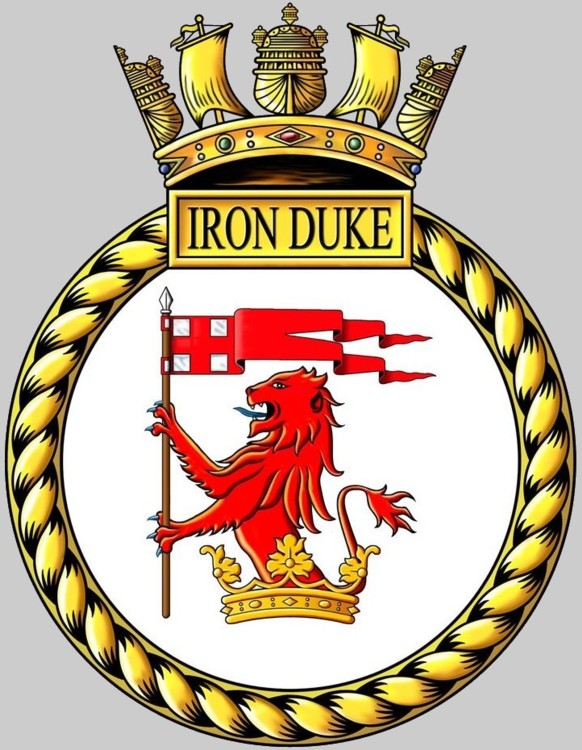 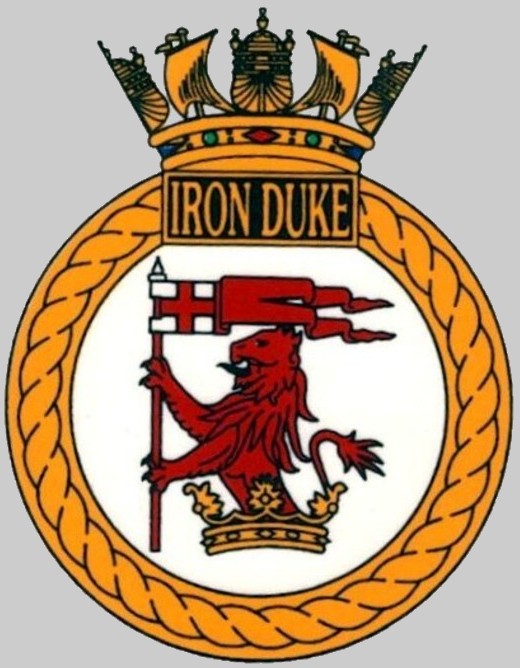 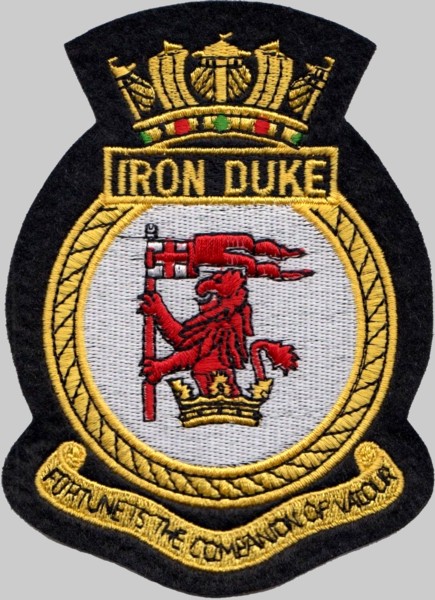 |
||
|
|
seaforces.org
|
Royal
Navy start page
| |